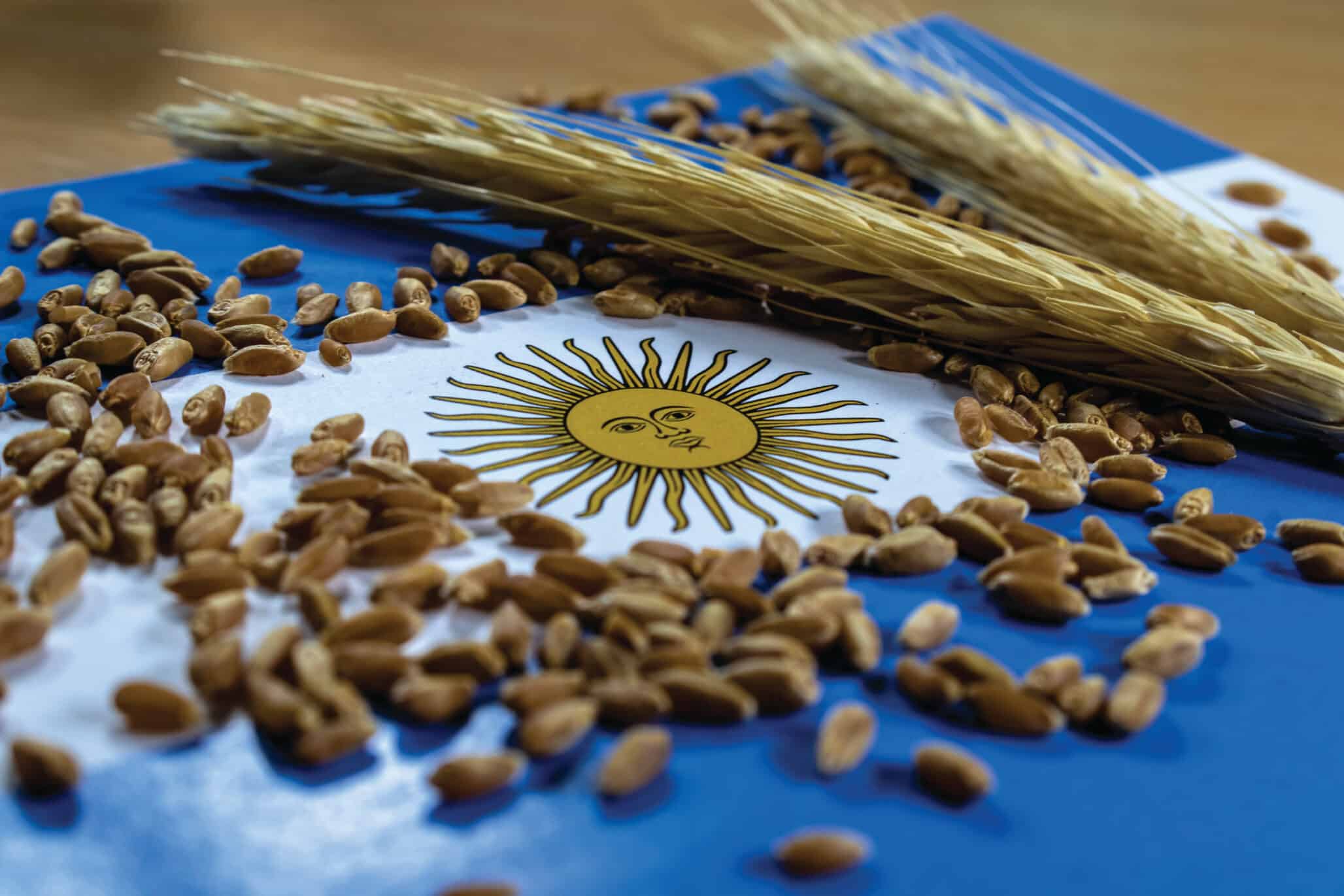A look at seed intellectual property around the world.
Looking into plant intellectual property law around the world lands the spectator in the middle of the culture wars of the late 20th century. Marxism lost its attraction on the global intellectual scene and intellectuals of communalist inclinations turned to ideals of ruralist communitarianism which directly clashed with the growing seed industry.
Intellectual property rights (IPR) grant temporary property rights to new technologies in order to reward innovation. In the seed industry, innovations usually involve the development of new plant varieties and new genes via biotechnology. Opposition to plant breeders’ rights and biotechnology patents made these rights into negative symbols of the modern industrial, individualistic and commercial world. Opponents of biotechnology held that the anti-modern, communitarian, rural village life was the ideal form of human society; in that village, seed was exchanged and traded between neighbors and cousins, without the intervention of big companies which were assumed to own the patents and Plant Variety Protection certificates.
In the Beginning
The movement toward global recognition of intellectual property rights is associated with the World Trade Organization. Prior to the 1994 WTO founding compromise, the South made the argument that some kinds of knowledge should be communal property and non-patentable. The North made the counter-argument that no one should get a free ride for the use of expensive intellectual inventions. The North mostly won. The Trade-Related Aspects of Intellectual Property Rights (TRIPS) agreement declares that all useful inventions should be patentable, regardless of the field; but the victory was not complete. Medical technology, and biotechnology related to plants and animals, could be optionally excluded in member countries.
As a result of differences between the United States and Europe, non-patent systems for the protection of plant and animal breeders’ rights were allowed. The globalized non-patent system is UPOV, the International Union for the Protection of New Varieties of Plants. UPOV members grant PVP certificates, but TRIPS does not require UPOV membership or a UPOV-type law.
The WTO was designed to reduce government interference in trade. The expansion of IPR rights for plants was highly visible because it was new. The opposition to plant intellectual property rights has expressed itself as proposals for communal farmers’ rights to germplasm. And while the fundamental justification for patents is to provide individual incentives for the creation of useful knowledge for society by granting temporary monopoly rights, opposition to plant IPR focuses on the negative aspects of monopoly, and deliberately neglects the time limitation of IPR monopolies and the benefits of new technology and competition.
Patents and PVP both assume that there is a pool of common information and germplasm available to all, and that IPR contributes to that pool. However, farmers’ rights to communal germplasm propose to institutionalize the crop germplasm commons. It is possible to separate the two objectives, but they are becoming entangled in ways that continue to slow the acceptance of IP for plant varieties and biotechnology around the globe.
The Role of Farmers’ Rights
So what is involved in farmers’ rights to communal crop germplasm? A model law proposed by the African Union in 2002 provides an example. The model recognized the contributions local farming communities made to crop germplasm pools as justification for farmers’ rights. In the model, community varieties could be protected and farming communities would have the right to share in benefits from the use of communal germplasm. In addition, individual farmers would have the right to save, use, exchange, multiply, process and sell seed of the communal varieties, with some restriction on the large scale sales of protected varieties. The AU model has only been used by one country.
In 1993, the Convention on Biological Diversity created community rights for local biological diversity and justified such rights as providing incentives for biological conservation. The agreement was based on work at the FAO to provide legal protection for biological resources.
The concept of farmers’ rights was introduced in the FAO debate in the early 1990s to address the rights of local communities to common crop germplasm, and in 2001 this effort produced the International Treaty on Plant Genetic Resources for Food and Agriculture. This treaty separated crop germplasm conservation from breeders’ incentives, but the separation has not fully been accepted, and attempts to link the two categories continue.
India has become the center of populist opposition to plant IPR. In 2001, India passed an intellectual property law which combined conventional plant breeders’ rights with elements of farmers’ rights. The law was the result of eight years of negotiations to strengthen IPR for plant breeders, and when the act was strengthened, the addition of farmers’ rights made it politically acceptable. The farmers’ rights include the right to sell seed of varieties which are protected under plant breeder’s rights, a privilege which was a major concern for the seed industry. This law is not far from UPOV, and the Indian governments of the last decade have been in favor of harmonizing it with UPOV. However, most NGO groups who supported farmers’ rights are opposed to joining UPOV.
The Path Forward
TRIPS includes a mandatory review of the exclusion of plant and animal biotechnology from patent requirements and the allowance for non-patent rights protection systems for plant varieties. Rather than narrowing the exclusion for biotechnology, the 2001 Doha Declaration requires that the TRIPS Council should look at the relationship between the TRIPS Agreement and the CBD protection of traditional knowledge. Linkage of the CBD and TRIPS is officially on the table, but does not seem to be moving to any international compromise.
Since 2004, the Indian discussion has centered on a proposed seeds law requiring that commercial seed be certified by registered seed producers. This would allow government control over quality and would limit the sale of seed by farmers who would not meet the quality standards. The Indian seed industry supports the law, but it has been opposed by the same group of NGOs who support the strong farmers’ rights provisions of the 2001 breeders’ rights law.
The TRIPS agreement continues to increase the number of countries where plant breeders’ rights will be recognized. The 1978 UPOV accord provided a stronger farmer exemption than the current version. In the late 1990s there were a number of countries, such as China, who joined UPOV before the deadline for joining the 1978 accord, and the most important seed markets in the developing world joined WTO prior to 1999. Despite opposition, 25 new members (the largest emanating from the old Soviet Bloc) have joined UPOV since 1999, increasing the 1999 membership by more than 50 percent.
Most WTO members were required to create laws to implement the TRIPS agreement before 2005. Some, but not all, have done so. There is another deadline looming: the least-developed countries were given an extension until 2013 to set up the appropriate intellectual property protection. But many have not yet done so.
When the original discussion of TRIPS was negotiated, the grand bargain was that developing nations would accept IPR if the developed world reduced its protection for agriculture, opening markets to more developing world agricultural products. The developing world got much of what it wanted. Agricultural subsidies in the North were decoupled from production, removing surpluses caused by price supports, surpluses which had previously been dumped into developing world markets.
The 1994 intention was to go further and reduce the level of gen
eral agricultural subsidies, but in the current world downturn, the Doha Round of WTO discussions have stalled. It does not now appear that another grand bargain of reduced developed world agricultural subsidies in exchange for better developing world recognition for IP protection for biotechnology is possible. On the other hand, the largest developing countries are so firmly and importantly involved in trade—internal and external—that it is not likely that expanded farmers’ rights can reduce the current ability to protect breeders’ rights. Paul Christensen
Editor’s Note: Paul Christensen is the founder of Christensen Consulting—more of his views can be found on his website at intlcorn.com.












